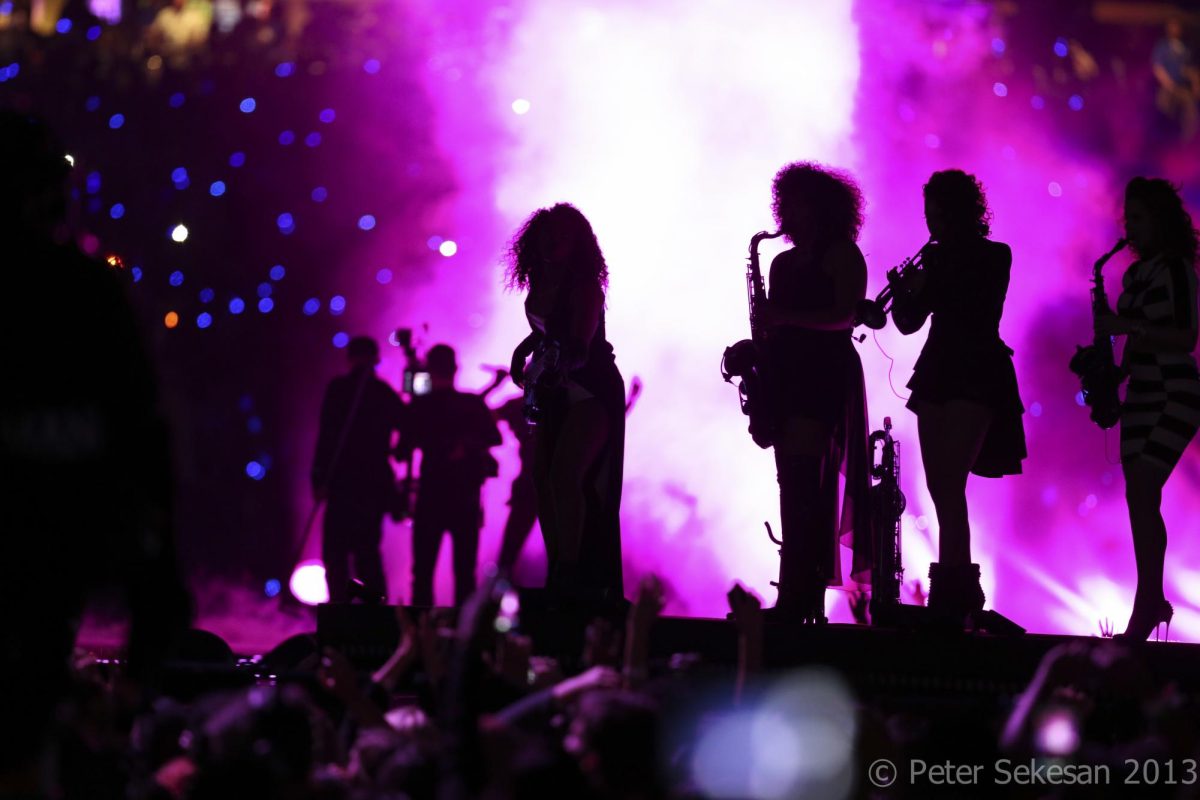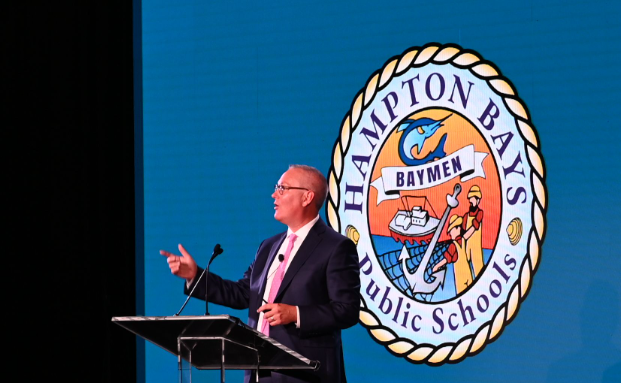There he stood, looking into the crowd of millions of fans from all around the world. The stadium lit up with excitement as Michael Jackson began to dance and sing some of his most iconic and well-known songs. Little did Jackson know that his performance at the 1993 Super Bowl would forever change the standard of the Super Bowl halftime show.
Over the past 58 years, the Super Bowl has grown into one of the most watched events in the United States. Football fans from all over the U.S. come together to eat, drink, and watch the game. One of the most entertaining things fans watch during the Super Bowl other than the game itself is the halftime performance. This performance is known for pop-star celebrities performing at the game with well-known songs that most of the audience knows. While this has become the tradition of the halftime show, it has evolved significantly from its roots.
Before celebrities and special guests performed the halftime show, it used to be performed by college and high school marching bands. The first-ever Super Bowl halftime performances weren’t always such a watched event and the performances themselves weren’t as elaborate and long as they are today. It wasn’t until the Super Bowl of 1993 when Jackson took the stage that the halftime show was transformed into what it is known to be today.
Originally the Super Bowl halftime show was performed by high school marching bands, usually from the state in which the Super Bowl game was taking place. The first Super Bowl performance was in 1967 and two college bands, the University of Arizona Symphonic Marching Band and the Grambling State Marching Band, formed shapes of classic Americana, such as a paddle boat and the Liberty Bell while playing marching band tunes. This performance was free of commercials and bloat. Different marching bands ranging from high school to college students would perform the halftime show until 1991 when New Kids on the Black performed the halftime show.
As years went on, some Super Bowls even began to take on themes. In 1981, the Super Bowl took place at the Caesars Superdome in New Orleans, Louisiana. This specific Super Bowl was themed for Mardis Gras because New Orleans is widely known for their intense celebration of Mardi Gras. In 1989, an Elvis impersonator took center stage and performed in the mix of a 3D light show called “BeBop Bamboozled in 3D.” Two years later, New Kids on the Block sang a few of their most well-known songs alongside many of Disney’s cast members. This was the first Super Bowl performance that didn’t include any sort of marching band. At this time the United States had just begun Operation Desert Storm in the Persian Gulf. Due to this, the halftime show was tape-delayed until after the game, and a Gulf War news report was shown instead.
In 1993, Jackson, the “King of Pop”, transformed the halftime performance. It was a high-energy, feel-good, inclusive-o-rama with the theme of “Heal the World” featuring a finale with 3,500 children and teens. Later that year, there were allegations that Jackson had molested four children, creating growing concerns and opinions over his recent Super Bowl halftime show. While these allegations arose, Jacksons performance paved the way for how the halftime show would be performed for many of the following years.
Years later, in 2007 Prince made his Super Bowl halftime debut. Using lights in the crowd to form figures and singing many of his most famous songs, Prince’s performance became ranked as the best Super Bowl performance according to Vulture magazine. The most memorable part of his halftime show was when he ended the performance with a rendition of his song “Purple Rain.” While singing, it started to pour, making the song that much more impactful.
Another big year for the Super Bowl was when Shakira and Jennifer Lopez performed in 2020. According to Billboard, the selection of Shakira and Jennifer Lopez was intended to reflect the Latin culture of the host city Miami. This was the third time Latin music artists headlined the Super Bowl halftime show; Gloria Estefan headlined both the Super Bowl XXVI halftime show in 1992 and the Super Bowl XXXIII halftime show in 1999. Shakira and Jennifer Lopez showcased their culture, winning awards for “Best Live Performance” in 2021 at the Premios Nuestra Tierra, an annual Colombian music award show.
The last four years of the Super Bowl halftime performances have featured some of the most well-known and respected music artists of the 21st century such as Dr. Dre, Snoop Dogg, Eminem, Mary J. Blige, 50 Cent, Rhianna, Usher, and Kendrick Lamar. In 2023, Rhianna performed on stage for the first time since 2018. Her performance attracted millions of views from all over the world. While singing, she announced her pregnancy by rubbing her stomach and revealing her bump. This announcement caused social media platforms and fans to go crazy.
The most recent Super Bowl game was played in Caesars Superdome again. For this year’s Halftime show, Kendrick Lamar performed a series of his most popular songs, returning to the stage after being a guest in the 2022 Halftime show.
Compared to the past six years, Lamar’s performance gained the attention of over 133.5 million viewers, much more viewers than the previous years. At the beginning of his performance, he began with a quote saying, “The revolution’s about to be televised, you picked the right time but the wrong guy.” Referring to the recent Election of President Trump, Kendrick’s quote and performance left many people in America to debate. While many people argue they did not understand the message of his performance, others say that his message was felt and understood across America. Along with his performance causing political debates, his choice to perform his diss track against world-famous rapper Drake left many Drake fans mad and disappointed. Lamar’s fans on the other hand were pleased and excited to see that he sang the diss track on live television.
As it can be seen, the Super Bowl has had a history of different performances and styles. Over the years, these performances have become more well-known and watched. There have been 12 presidents since the first ever Super Bowl, many historical events have taken place, and so much cultural representation in the halftime performances.






